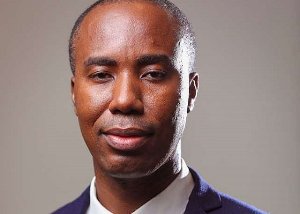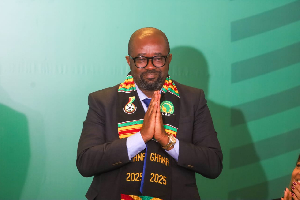Our near-term outlook for Ghana’s oil production is brightened, as targeted investment is set to rise by 50% in 2021 for the Jubilee and TEN fields.
Tullow Oil – operator of Ghana’s two largest fields, TEN and Jubilee – recently announced net capex spending on their Ghanaian assets will increase to US$180 million in 2021, from just US$120 million in 2020. This includes plans for a multi-well drilling campaign, expected to begin in Q221.
Since TEN and Jubilee are responsible for 80% of Ghana’s total oil production, this investment boost is significant for the country’s upstream sector. Given the planned spending, we have revised our previous forecast, which anticipated a stagnation in production until Aker Energy’s Pecan Field comes online.
We now expect an uptick in production to average 2.0% y-o-y between 2022 and 2024, as the planned drilling activity will help offset the declining output rates at Ghana’s fields. However, due to comparably weaker capex spending in 2020, we maintain our expectation that production will decline by 2.0% in 2021.
The forecasted boost in Ghana’s oil output will be partly a result of improved gas offtake performance and higher water injection rates, which both help maintain higher production.
In H2 2020, gas offtake nominations from the Ghana National Gas Corporation increased by 63% at the Jubilee and TEN fields, to 106mmscf/d. Tullow Oil targets gas offtake to increase beyond 130mmscf/d in 2021.
Meanwhile, water injection rates at the Jubilee field are set to increase by 50% in 2022, to average 270,000 b/d supporting higher oil production rates.
Ghana’s oil sector still awaits a boost from the Pecan Field, which we now expect online in 2025. The anticipated development of the 110,000b/d Pecan field holds the key to the country’s oil future. Due to delays and lack of project updates, we now include first production from the field in our 2025 forecast.
The field is an ultra-deepwater play in the DWT/CTP block offshore Ghana and is estimated to contain about 334 million bbl of oil equivalents.
Consequently, its successful development presents significant upside risk to our longer-term outlook for Ghana’s crude oil production.
FID was initially anticipated in H2 2019, with first oil expected 35 months later. The low-oil price environment seen in 2020, as a result of the COVID-19 pandemic, means FID is once again postponed.
Having been initially expected to require an investment of US$4.4 billion, Aker Energy and its partners are now aiming to reduce the capex needed for the project.
They aim to find a development concept with a sustainable break-even price, should a low oil price environment continue. Due to the project revaluations, we do not expect to see FID until 2022.
Following first oil in 2025, we expect Ghana’s oil production will peak in 2027 at 297,190b/d, as the field reaches a plateau. Further delays to the Pecan project reaching FID in 2022 will shift the peak production to the tail end of 10-year forecast period.
Additional opportunities at Ghana’s fields provides upside risk to our longer-term outlook for Ghana’s upstream, providing technical issues are averted.
Overall, we expect to see sustained output from Ghana’s oil fields over our long-term forecast, owing to increased spending and the pending investment decision for the Pecan Field. The development of additional reserves offers significant upside to this forecast.
An upside to our long-term outlook rests on the successful development of Ghana’s oil resources. So far, just 400 million bbl of oil (gross) has been produced from the Jubilee and TEN fields, out of the 2.9 billion bbl in place – representing 14% of potential production.
While this signifies there is ample opportunity for Ghana’s upstream, we consider ongoing technical issues at both fields provide downside risk to the country’s oil production potential.
Previous issues have meant output at the Jubilee and TEN fields is currently capped at 70% of maximum FPSO capacity with Jubilee and TEN at 120,000b/d and 80,000b/d respectively.
Nevertheless, Tullow Oil’s recent focus on improving water injection efficiency and optimising wells is set to enhance the fields’ output over our forecast period, thus raising the prospect increasing recoverable reserves at both fields.
At the Jubilee and TEN fields, there are currently 49 injection and production wells planned between 2021 and 2030, with each production well projected to have an initial production rate of 10-15,000b/d.
Despite the company’s ambitions, is unlikely all wells will reach the desired initial production rate over the planned period given the decline rates present at the field.
Consequently, each additional well drilled could have a diminishing initial output, with the expected drop in reservoir pressure without significant reservoir support from water injection.
Although, well costs have fallen to near US$60 million per well, according to Tullow, the increased number of wells and higher operating costs expected from an expanded injection programme may limit the scope of future investment if oil prices deteriorate from the current levels near US$50/bbl.
As a result of the current ongoing and planned developments, there lies much potential for Ghana’s upstream sector. Yet the gradual declines of Ghana’s existing fields mean success is contingent on substantial investment and the fruitful development of the Pecan Field.
Both these factors will be affected should the sustained weak oil price environment continue into our longer-term forecast.
THIS COMMENTARY IS PUBLISHED BY FITCH SOLUTIONS MARCO RESEARCH and is NOT a comment on Fitch Ratings’ credit ratings. Any comments or data included in the report are solely derived from Fitch Solutions Macro Research and independent sources. Fitch Ratings’ analysts do not share data or information with Fitch Solutions Macro Research.
Business News of Wednesday, 6 January 2021
Source: thebusiness24online.net

![File photo [FPSO Nkrumah vessel] File photo [FPSO Nkrumah vessel]](https://cdn.ghanaweb.com/imagelib/pics/254/25421395.295.jpg)











